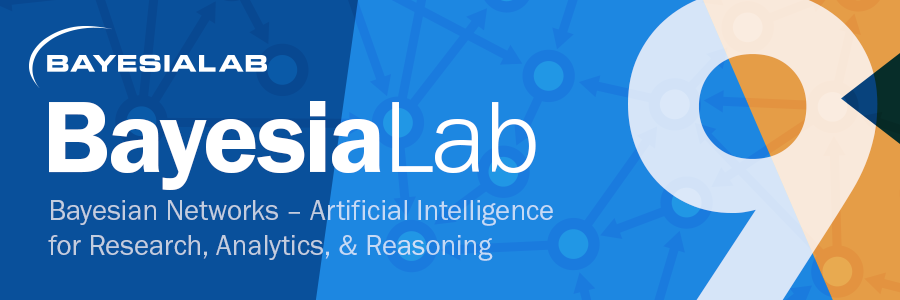New Release: BayesiaLab 9.0

Since 2001, BayesiaLab has been the undisputed reference standard for Bayesian network software. Version 9 raises the bar even higher by further expanding the range of research and analytics applications of the Bayesian Network formalism. With BayesiaLab 9, the powerful properties of the Bayesian Network paradigm can be utilized even better for exploring complex, high-dimensional problem domains.
Here is a small selection of new or updated features released in BayesiaLab 9.0:
- The Target and Function node optimization tools are enhanced with new options and outputs.
- The new Most Relevant Explanations function provides precise and concise explanations for your current set of evidence.
- By setting Structural Priors, you incorporate any available, partial prior knowledge about a structure.
- You can improve the quality of machine-learned models with BayesiaLab’s new Smoothed Bootstrapping algorithm, Data Perturbation. It perturbs the sample data not only with the weight of each particle but also with the overall Structural Coefficient.
- You can automatically estimate Structural Priors via Resampling/Bagging. This is particularly powerful for small data sets as you no longer have to search for the best Structural Coefficient.
- As a step toward learning causal Bayesian networks, you can induce a Partial Order among your variables via Resampling/Bagging.
- The Markov Blanket Learning Algorithms can now take into account constraints on arc directionality as defined by Temporal Indices or Forbidden Arcs.
- The cross-validation of Variable Clustering now features Purities to estimate the quality of Factors.
- The Code Export function (optional), can now produce Python code. This code, when embedded into your own program, can compute the posterior probability of a Target node given its Markov Blanket.
- By separate subscription, a new Media tool gives you access to presentation slides and recorded videos of the Introductory and Advanced BayesiaLab Courses.
- In the 3D Mapping tool, you can now apply textures to nodes and use auto-rotate for creating visually appealing animations of your Bayesian network models.
